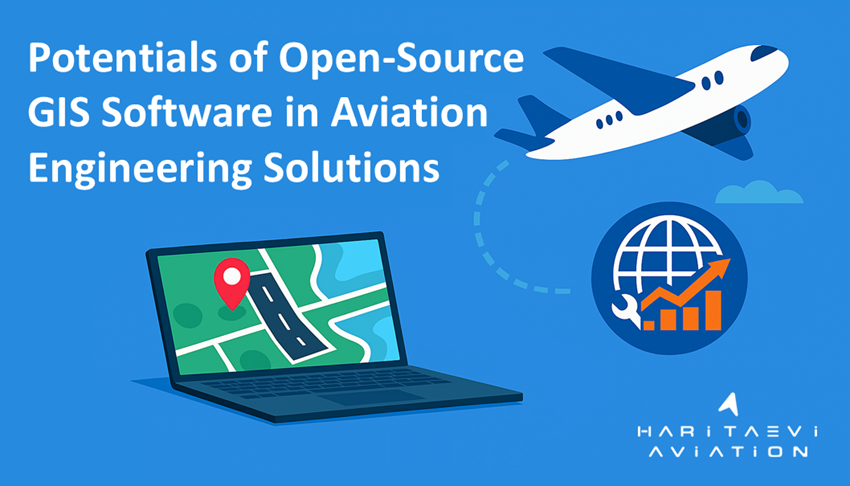June 2, 2025 – Halil Uğur ERCAN

Open-source software, once preferred mainly by individual developers and small businesses, has now become a key tool for large companies and critical industries. While eliminating licensing costs is one reason for its popularity, the greatest advantage of open-source software is its flexibility and adaptability. Users can customize the software to meet their specific needs, making it particularly valuable for industries with specialized requirements.
Another important benefit is the strong community support behind open-source software. These tools are continuously updated and improved by developers around the world. The community plays an active role in fixing bugs, adding new features, and creating guides or solutions. This creates a rich source of knowledge, which can also be used by AI systems to provide faster, smarter solutions. For example, if a user encounters an issue with open-source GIS software, an AI-powered system can analyze community resources and public guidelines to offer solutions quickly.
With these strengths, open-source software offers not only cost savings but also tools to develop solutions tailored to users’ needs. Thanks to strong community support, these tools evolve continuously. In a highly specialized industry like aviation, the flexibility and adaptability of open-source software drive innovation and efficiency.
GIS Solutions in Aviation
In aviation, various stakeholders use different CAD (Computer-Aided Design) and GIS (Geographic Information System) software for their operations. Examples include airport planning and design, airside and landside management, airspace management, route planning, obstacle analysis, flight procedure design, and producing aeronautical charts. Many of these tools are COTS (Commercial Off-The-Shelf) software adapted for aviation, with additional industry-specific modules or plugins.
GIS is particularly powerful in aviation due to its ability to manage spatial data. Aviation-related data can be created, stored, processed, analyzed, and reported within GIS systems. For instance, an Aerodrome Mapping Database (AMDB) can store information about runways, taxiways, aprons, and markings, including their location, elevation, size, and usage status. This data can then be used for airside operations.
Similarly, Electronic Terrain and Obstacle Data (eTOD) provide information about obstacles and terrain around airports. This data helps calculate the minima required for flight procedures and supports the design of procedure charts within a GIS environment.
Other applications of GIS in aviation include navigation, route planning, flight optimization, and environmental impact assessments. These tools help make aviation operations safer, more efficient, and more sustainable.
Haritaevi’s Approach
At Haritaevi Aviation Engineering Services, we use open-source software to support our work and develop innovative solutions. Through the plugins and scripts we create, we enhance production and quality control processes, making them faster, safer, and more effective.
- Haritaevi eCOS Creator Plugin
We developed the Haritaevi eCOS Creator (eTOD Areas, CNS BRAs, Obstacle Limitation Surfaces Creator) plugin for QGIS, an open-source GIS software, to automate complex surface design tasks. Previously, these tasks were done using CAD software and took hours to complete. With this plugin, users can create Obstacle Limitation Surfaces (OLS), eTOD Area 2, Take-off Flight Path Areas (TFPA), and Building Restricted Areas (BRA) for CNS systems with just a few table entries and a single click.
The plugin uses parameters defined in ICAO Annex 4, Annex 14, Annex 15, and EUR Doc 015, as well as data from AIP AD 2 documents. After team members enter AIP data into the plugin, the system generates 3D surfaces in seconds based on airport and runway characteristics (e.g., runway size, reference code, approach category). The results can be exported in vector or raster formats. This plugin speeds up complex design processes, improves efficiency, and reduces human error.
- eTOD Converter
Another tool we are developing is the “eTOD Converter,” currently in script form but planned to become a plugin. Producing eTOD data involves long and detailed processes, including quality checks, data analysis, and attribute integration.
Our script speeds up the initial quality control of data collected from field measurements or satellite images. It evaluates geometric suitability and performs obstacle analyses according to eTOD obstacle collection criteria. With this tool, we can analyze data not only for eTOD requirements but also for OLS surfaces. This helps identify obstacle penetration and optimize data production workflows.
- Future Developments and Potentials
At Haritaevi Aviation, we are actively working on automating both the design and assessment processes associated with the upcoming “OLS New Concept” using open-source GIS software. These efforts aim to offer more flexible, transparent, and efficient workflows aligned with ICAO’s evolving standards. We are well-prepared for these changes, which were introduced during the “ICAO/ACI Obstacle Limitation Surfaces Symposium (OLSS 2021),” an event proudly sponsored by Haritaevi Aviation.
Our team is also investing in the automation of complex aeronautical charting processes. One of the next concrete steps may be the automated production of Aerodrome Obstacle Charts Type A and Type B, as well as the Precision Approach Terrain Chart. It is possible to build systems that can generate these charts in seconds—directly from obstacle and related surface/area data—dramatically reducing manual workload and the potential for error.
While these services—such as the design and assessment of Basic ILS surfaces, Obstacle Assessment Surfaces (OAS), Final Segment Protection Areas, or minima calculations for Instrument Approach Procedures (IAPs)—are not provided in-house at Haritaevi Aviation, we deliver them through our certified and highly experienced partners. We place significant value on understanding the logic, geometry, and regulatory framework behind these components to better support the overall process. In this context, we believe that open-source GIS software holds great potential for enabling the design, assessment, and even partial automation of such complex aeronautical components.
Conclusion
Open-source software plays a critical role in highly specialized industries like aviation due to its flexibility, cost-efficiency, and strong community support. At Haritaevi Aviation, we use these tools to create innovative solutions, addressing the complex needs of the aviation sector. By developing plugins and tools, we not only solve current challenges but also support the digital transformation of aviation engineering. We believe open-source software will continue to grow in importance, and we are committed to leading innovation in the aviation industry.




